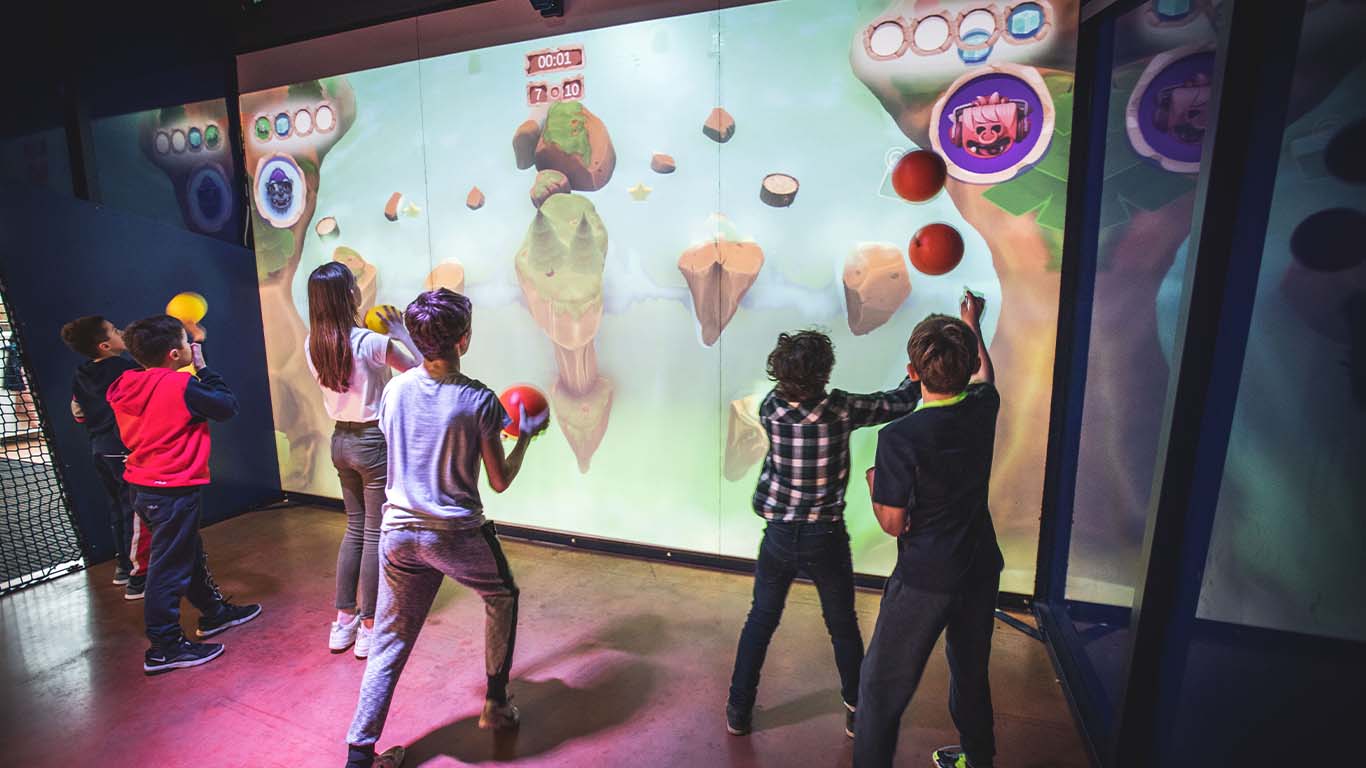From Pong to the modern gaming era.
Interactive games have come a long way from their humble beginnings. From simple arcade games to immersive experiences, they’ve evolved into a thriving industry that captivates millions of gamers worldwide. We explore the history of interactive games, from the earliest stages of video gaming to the advent of modern gaming.
The beginnings of video games: Pong and arcade games
The history of interactive games began in the 1970s, with the famous Pong game in the arcade. Created by Atari, Pong is a simplistic tennis game that was the first major commercial success in the video game industry. It was followed by a host of iconic arcade games, such as Pac-Man and Donkey Kong, which helped popularize interactive games and inspire gamers the world over.

They made their mark by offering an immersive gaming experience and introducing interactive controls. Players could now interact directly with game elements using joysticks and buttons.
The rise of game consoles
In the 1980s, video game consoles made their appearance, bringing interactive games directly into the home. The Atari 2600 console led the way, allowing gamers to enjoy games such as The Legend of Zelda and Tetris. Game consoles such as the Nintendo Entertainment System (NES) and the Sega Genesis dominated the market and contributed to the expansion of the video game industry.
More sophisticated game controllers and improved graphics paved the way for deeper immersion in virtual worlds. Games like “Super Mario Bros.” and “Sonic the Hedgehog” have captivated gamers the world over.

The rise of PC gaming
Alongside game consoles, personal computers have also played an important role in the history of interactive games. The first PC games, such as Zork and King’s Quest, popularized the genre of text-based and graphic adventure games. Technological advances enabled the creation of increasingly sophisticated games, paving the way for a variety of genres such as role-playing games (RPGs), real-time strategy games (RTSs) and first-person shooters (FPSs).

The era of modern gaming
In the 1990s and 2000s, the video game industry underwent a veritable revolution. Next-generation game consoles, such as Sony’s PlayStation, Microsoft’s Xbox and Nintendo’s Wii, offered advanced graphics, open worlds and immersive gaming experiences. Massive multiplayer online games (MMOs) such as World of Warcraft have enjoyed phenomenal success, enabling players to connect and interact with millions of other gamers around the world.

The advent of mobile games
In recent years, the rise of smartphones and tablets has ushered in a new era of interactive gaming. Mobile games have enjoyed unprecedented popularity, with titles such as Candy Crush Saga and Pokémon Go reaching millions of downloads.

The emergence of interactive walls
In the 2000s, technological advances opened up new possibilities for interactive games. Interactive walls began to appear in shopping malls, museums and public spaces, offering gamers a more immersive experience. These walls were often equipped with motion sensors and gesture recognition technology, enabling players to interact with games using their whole body. Projects such as “Interactive Wall of Art”, which transformed works of art into interactive experiences, and “Gaming Zone”, which enabled gamers to experience virtual adventures through large-scale interactive walls, are just two examples.

Since 2019, NeoXperiences has been a player in the interactive wall market. It develops immersive, interactive play areas to revolutionize the entertainment market with its Neo-One innovation. Its solution is aimed primarily at players in the leisure, events and retail sectors, enabling the general public to enjoy innovative and unique experiences.
Conclusion
The history of interactive games is one of constant progress and innovation. From simple arcade games to complex mobile games and virtual reality, the evolution of technology has shaped the video game industry as we know it today. Interactive games continue to push the boundaries, offering increasingly captivating and engaging experiences for gamers around the world. As the interactive wall and game industry continues to develop, we look forward to seeing what exciting innovations the future holds.
Other news
From Pong to the modern gaming era. Interactive games have come a long way from their humble beginnings. From simple arcade games …
Results of the first phase of a study to determine the feasibility of a sports session using the Neo-One interactive wall with …
To improve the shopping experience for visitors, facilitate access to leisure activities and reinvent and reinvigorate our shops in ways that are …


L'histoire des jeux et murs interactifs - Neo Xperiences
[…] CONTACT Français English […]